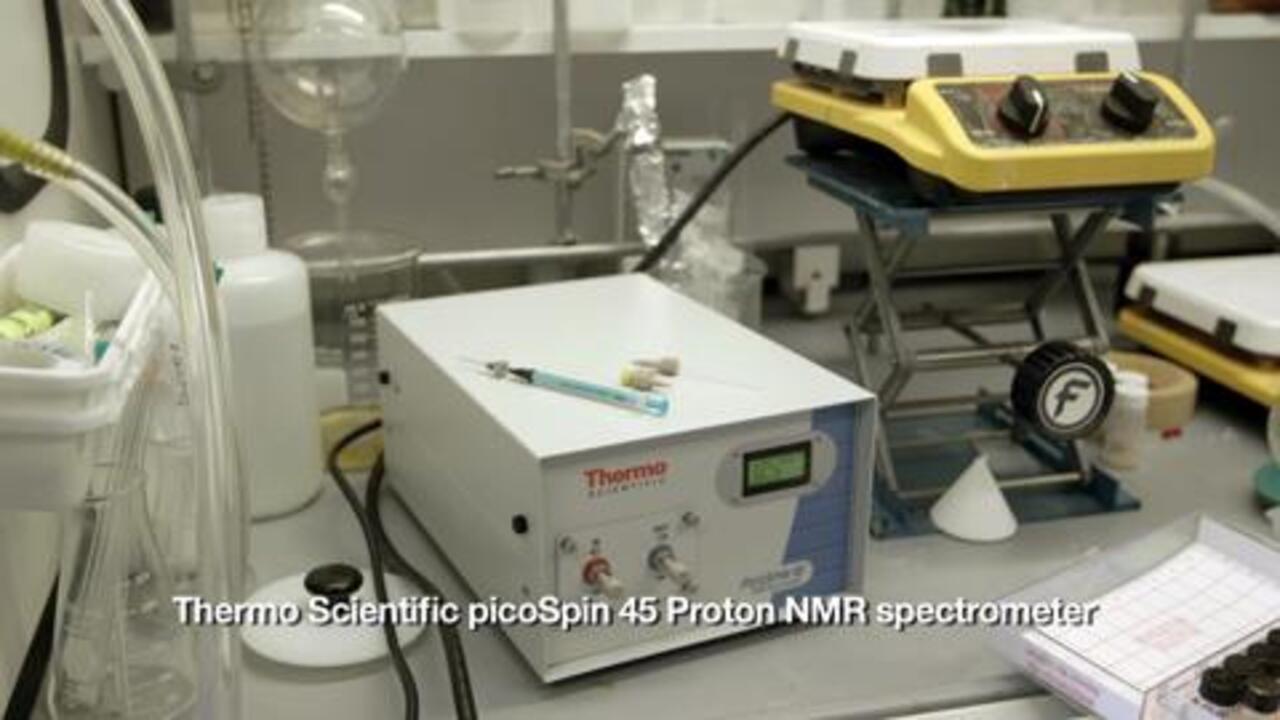NMR spectroscopy is the method of choice for many organic chemists because of its versatility in elucidating molecular structure, optimizing reaction dynamics, measuring reaction kinetics, monitoring reaction content and controlling product purity. NMR spectroscopy provides a wealth of information on physical, electronic, chemical and structural aspects of molecular systems. It is a nondestructive technique ideally suited for measuring and recovering small sample quantities. NMR complements other techniques, such as FTIR, UV-Vis spectroscopy and mass spectrometry, providing a wealth of molecular-scale information. Now, instead of relying on limited access to an expensive central NMR facility, you can have an inexpensive, compact and reliable NMR spectrometer right in your own lab.
The spectrum below demonstrates the capability of the Thermo Scientific picoSpin NMR spectrometer, revealing the characteristic triplet-quartet splitting pattern of the ethyl group in ethanol. High signal-to-noise ratio and high resolution marks the picoSpin 45 as a true spectrometer, providing quality spectra at a small fraction of the cost of conventional NMR spectrometers.
Often chemists need to establish the current state of their reaction – perhaps a reaction isn't proceeding as expected. Is the stoichiometry off, or is an impurity present? NMR could tell us right away what may be the problem, but the NMR lab is booked, and you need results immediately. With a picoSpin-45 spectrometer, you can obtain results in a matter of minutes, and make adjustments to your reaction pot today, not next week.
The NMR spectrum of ethanol above indicates the presence of an impurity signal at 4.3 ppm in what should have been a sample of pure compound. Preliminary analysis of this sample of ethanol would have prompted the chemist to dry the solvent prior to use, saving valuable time. The spectrum of ethyl acetate below indicates a samples free of impurities.




























